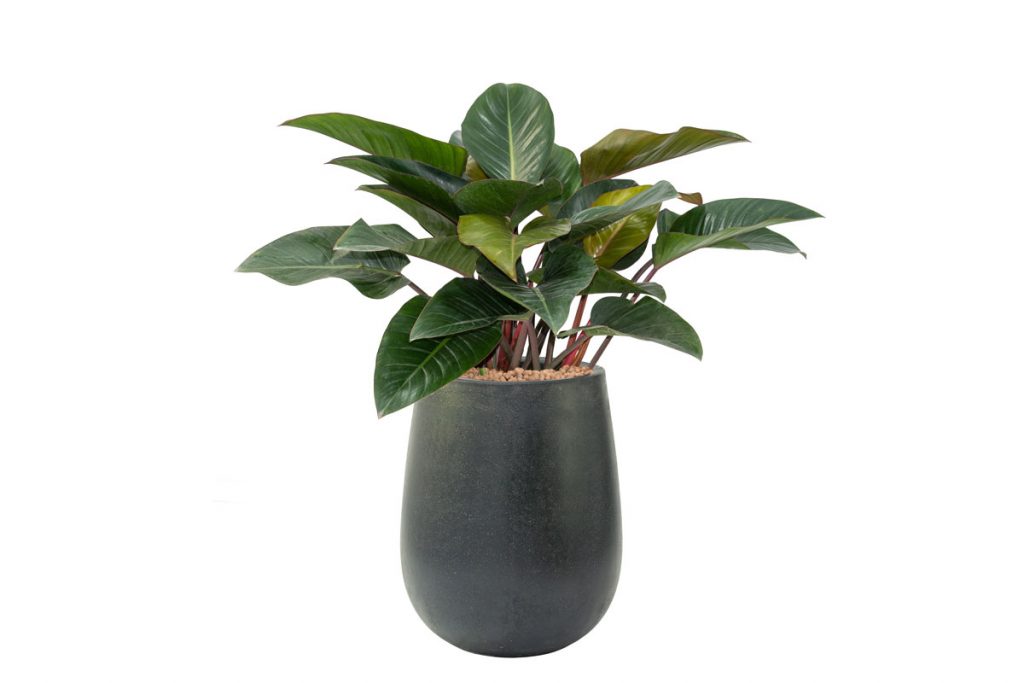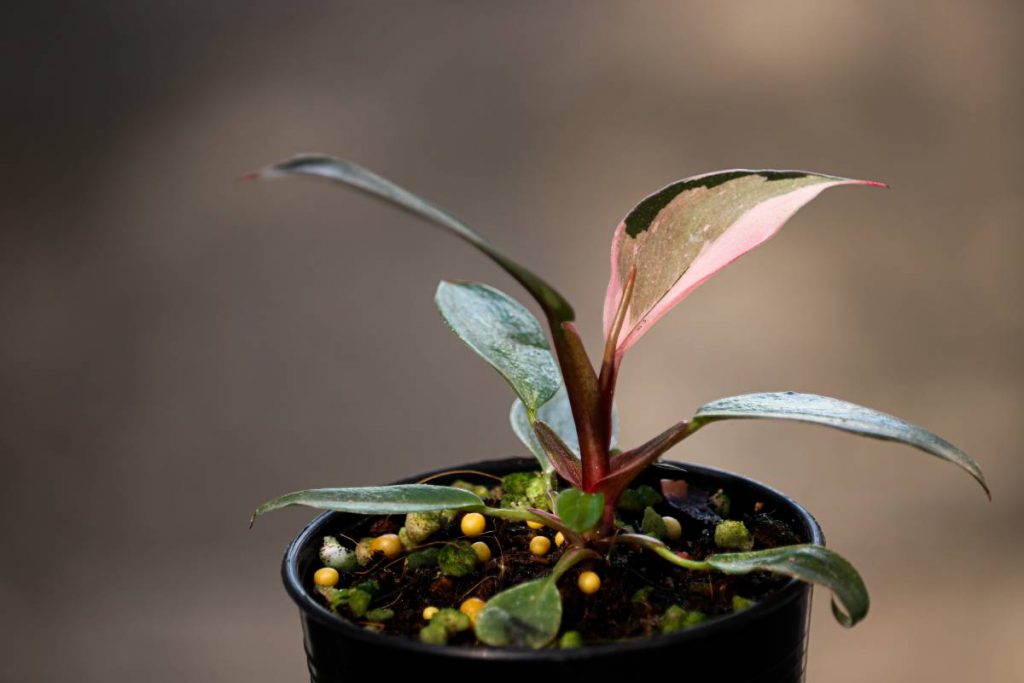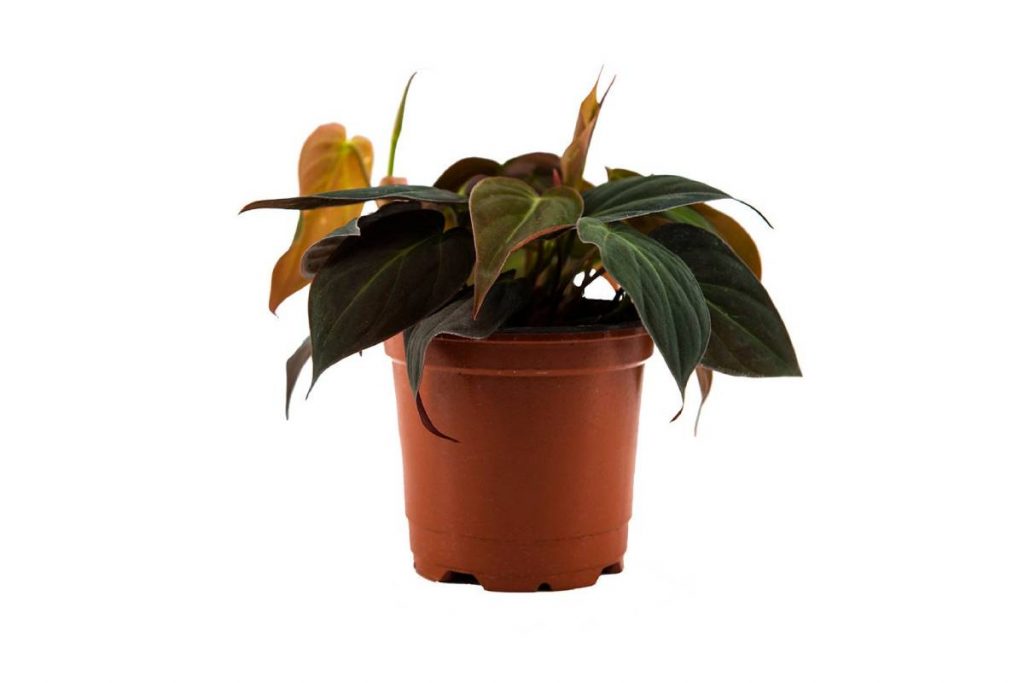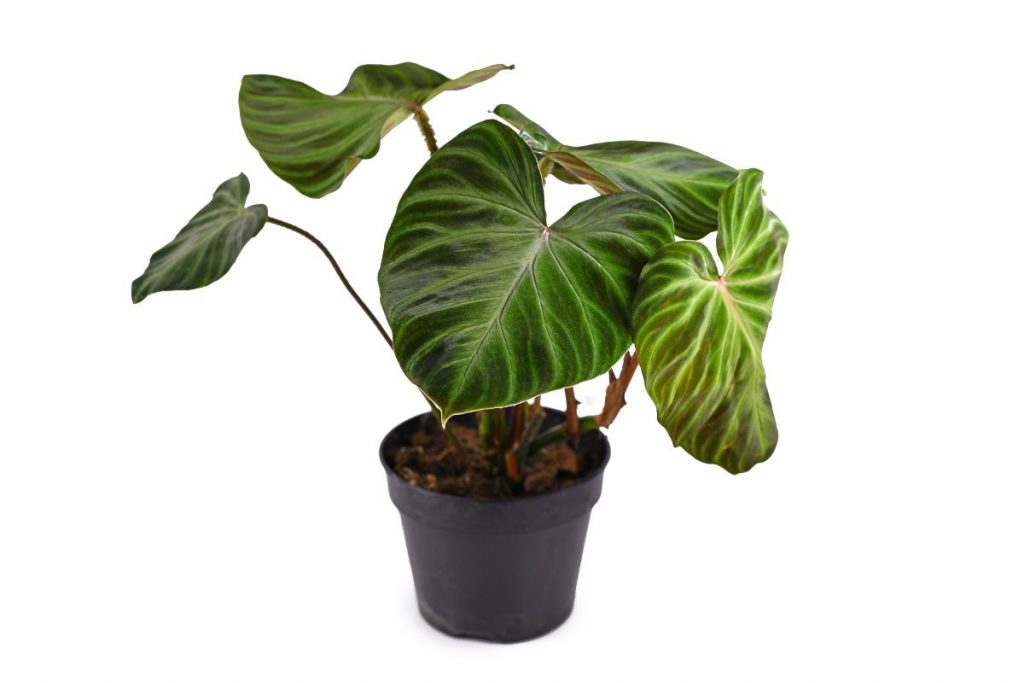Philodendrons are one of the best plants for house planting, and people have been plating them since Victorian times. They are generally found in the United States of America’s tropical forests for centuries. The philodendron imperial red is widely recognized as a blushing philodendron and red leaf plant. These plants are hybrids that have been invented by local plants grower. It belongs to the Araceae family of aroids.
It would be a perfect choice for people who want to decorate the interior of their house with the help of plants. They are small in size, which allows them to keep anywhere in the room or even at a desk. As they mature, their leaves spread widely, which can be a good sign for a floor plant. Moreover, the warm climate is suitable for keeping them, and taking care is one of the most straightforward jobs.
What Is Philodendron Imperial Red?
The philodendron red imperial red is a beautiful and variegated plant that cannot be found easily. They are every green perennial plant from the Araceae family. Their leaves are red, which makes them very different from other philodendrons. When the plants get mature, they start growing their glossy and beautiful leaves of red color which after a few months become dark red or purple. They are only available in specialized stores or rare plat stores.

How to Care For Philodendron Imperial Red?
These variegated plants are elementary to take care of, and the ideal room temperature for them would be around 66 – 81 degrees Fahrenheit. They can handle less moisture, but for their better development, the soil must be moist. Water logging or soggy soil can have a destructive impact on your plant.
You can prevent sogginess and water logging by making a loose potting mix for your variegated plants. Morning sunlight is adequate for their growth, and bright shades would also help to grow them better. Apart from this, the humidity level around them must be around 55 % for their desired growth.
Light Requirement
Philodendron plants often need a good amount of light, but the light should be indirect. If your plants have broad and green leaves, then it is a good sign about their light requirement. Imperial red leaves can drop if placed in a dark place. Placing your plant near the east-facing or west-facing window would be an ideal place because they are the sides where a lot of sunlight comes in a day.
Placing variegated plants in direct sunlight in the early morning for around 30 – 40 minutes would do much good for your plants. But if you provide them direct sunlight for a full day, then it might damage their foliage or even burn them. If you live in a non – equatorial region, then your philodendron might need sunlight for 12 hours a day because of the cold climatic conditions over there.
Water Requirement
Voter requirement for philodendron imperial red is different from different philodendrons. The potting mix that you are using should be drained well for regular watering. It would be best if you watered them once a week in the summer season, and in the winter season, watering after 10 to 15 days would be enough. Make sure to check the soil before watering them again. You can use your fingers to check the moisture level of the soil; insert your finger inside the soil; if it feels dry, the new must water your philodendrons, and if the soil is still wet, then you must wait until the soil dries.
Overwatering your plant can harm them because imperial red requires a limited amount of water for proper growth. Also, make sure that the soil in your plant’s pot must not soggy or sticky because it can kill your plant.
Soil Requirement
The soil requirement for philodendron imperial red is not much complicated; you can use simple soil, but it must be porous and loose. This will help your plan to breathe correctly, and it is also necessary for water draining. Using organic matter would be an ideal recommendation for you because organic mix contains moisture and nourishes your plant correctly. Apart from these, natural ingredients sustain organic debris around the plant’s roots.
You can use organic contents like peat Moss, Coco peat, kitchen compost, and many more the substance should be decomposed well because there is no use of non-decomposed manure and non-decomposed organic substances can make your plant prone to infection. The ratio of substances should be equal to 50 % organic and 50 % inorganic. One of the best tricks you can take care of your imperial red without any tension is your potting mixes with cactus plant soil. It might be a little expensive, but it is worth trying.
Temperature Requirement
Philodendron imperial red Is a tropical plant that loves to survive warm climatic conditions, and warm temperatures would be suitable for their better growth. If you are going to plant your imperial red inside the house, the room temperature should be 65 to 75 degrees Fahrenheit because this is the best temperature range for philodendron plants. However, if the temperature gets extra warmer, remember to place your plant in a low lighting condition, or maybe you can hydrate them.
Imperial red cannot survive in cold climatic conditions, and the minimum temperature they can tolerate is 15 degrees Celsius. Below 15 degrees Celsius your plant might not survive. If you are living in a cold region, then you should keep your plant inside and maintain room temperature, which can keep them warm.
Humidity Requirement
All philodendron plants grow well in a humid environment because they are tropical plants. So humid environment would be an ideal choice for your variegated plant. However, keeping them inside the house can cause dryness because of the air conditioner and heater, which would not be a good sign for your plant.
For the best growth result, the humidity of your house should be above 50%; apart from growing well, humidity also helps philodendron to stay healthy. There are several things that you can do to provide humidity to your plant. The first is that you can spray water through a water jet. In addition, you can also provide water regularly with cotton or a sponge by rubbing them on the leaves of your plant. However, if you don’t have enough time for the above solutions, you can also try a humidifier. Humidifier automatically changes the humidity of your room according to your preference.
Although humidity is nothing significant to worry about because proper moist soil can automatically provide moisture to your plant, these plants are capable of surviving a small amount of dryness in the environment; this means that you don’t have to worry about your plant that much.
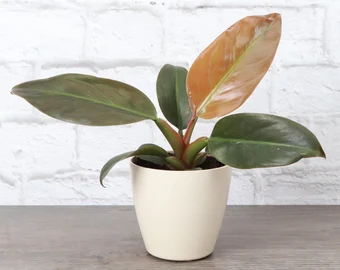
Fertilizer Requirement
Chemical fertilizers are not that good for this plant because they can grow without them. However, using organic compost and organic material in your potting mix would be a good idea. A good source of food for these plants is organic matter mixed with rich soil. Organic fertilizers are 100 times better than chemical fertilizers. In nature, when they grow up, they do not require any organic material or fertilizers, but still, they somehow manage to get nourishment from leaving debris and rainwater.
Due to some reason your plant is not getting correctly, then you can use common fertilizers which are used in house planting because philodendrons are highly adaptive plants for house planting. However, one essential thing is that you use only good quality chemical fertilizers as cheap quality fertilizers or chemicals can be very harmful to your plant. Therefore, you should feed your plants a considerable amount of fertilizer, and if you overfeed them, then it can lead to their death.
Potting and Repotting
Potting is an essential part for a house planter while planting philodendron imperial red. Philodendron requires reporting every two to three years for better growth. Below are some tips on how you can pot or re-pot your imperial red.
Potting– A small pot would be ideal for planting imperial red as it can last long for two to three-year. They again grow quickly in a small pot. You should need the following equipment before planting imperial red such as a pot, water, soil, and essential potting mix. Be safe while holding your plant before spotting them because they are compassionate and can be damaged easily. Take a small-sized pot and fill it in half with the soil, and then place the plant in a pot.
After that, put the rest of the soil in the pot and fill it. Again, try to keep the soil loose so that water can quickly drain out from them. Finally, after every step, when your pot is 100% ready for placement, the new converter slowly meets its requirement.
Repotting – For better growth after your imperial red, you must repot your plants after 2 – 3 years. Transplant your plant in their growing season, like summer and spring. In winter, philodendron stops its growth until the summer season. So it is necessary only to re-pot them in their growing phase.
Only use a pot more prominent than the previous one; it will allow roots to grow more and make the leaves of your plant much wider. Re-potting every year would be a much better option if you want your plant to grow bigger than a normal one.
Pests and Diseases
Philodendron imperial red are capable of fighting infections and pests as they are highly adaptive plants. But sometimes diseases can attack them like the other philodendrons; removing them would be one of the top priorities of their owner.
Pests – Scales are the most common pest which can damage your plant ultimately; they can be found in every plant. Scales are similar to the Millie bug; in fact, they are a perversion of the Millie bug. They are capable of collecting all the essential nutrition which is present in your plant, or they collect from manure or fertilizers. These pests do not change their location and damage a particular area of plant.
It is tough to recognize them because they look exactly like brown spots on the stem. Scale can decline the overall health of your plant.
Diseases – Bacterial and fungal infections are one of the most common problems seen on these plants. They are highly prone to diseases. They can start rotting the roots of your plant. Moreover, they can lead your leaves to turn yellow, and this would be a sign of a disease attack. Try to get rid of them as soon as possible because, after a few days, they can annihilate your plant.
Solution – You can use alcohol or antiseptics to treat your plant because diseases and pests are prone to alcohol products, or you can also wash your plant under a running tap.
Height and Growth Rate
It is a slow to fast-growing plant, depending on the environment they are in. And the maximum height of imperial red is around 95 to 124 cm while they are grown inside the house. So this is a suitable height for house planting.
What Kind of Flowers Do They Produce?
Primarily imperial red does not produce flowers because they are house plants and hybrids, and their leaves are even more beautiful than ordinary flowers. But if they are grown in their natural vegetation, then they produce large spathe-like flowers in pink color.
How to Propagate Philodendron Imperial Red
This process can be very easy for imperial red plants, also known as no-fuss plants. This plant is also epiphytic, meaning it doesn’t take much effort to root. The propagation can take about 2-3 months until the root becomes sprout. You can propagate these plants through the pruning method, which is very easy to use. Use a cutter or stem cutting tool to cut a stem between the growth nodes and place the cut in a glass of water. Try to protect them from direct light. Keep the cutting for a few weeks and give it indirect light. Then the trunk can be moved when it grows a little.

Is Philodendron Imperial Red Poisonous?
This plant is poisonous to both humans and animals, so if you have kids around your house, then keep the plants out of their reach. However, they are not that much toxic; their poison activates only by chewing or slowing the leaves of plants, and this can make your stomach pain very severely.
How Much Is Imperial Red Worth?
Despite being a rare plant, it is still cheaper than other variegated plants. It can easily be available for almost $ 50 – $ 100 US dollars. This is an inexpensive amount for such a beautiful variegated plant. You can buy them online or from local specialized stores because they are not available in ordinary stores.
Comparison Between Some Similar Plants
Imperial Red vs. Rojo Congo
Both the plants have very similar leave colors but different shades. Congo is dark red, while imperial red has light-colored red leaves. Their growth rates are also different, imperial have slow growth, and Rojo grows with a medium growth rate. Apart from this, there is a slight difference in their height and width.
Imperial Red vs. Red Emerald
People always get confused about these two plants because they both have similar colored leaves, and the shape of the leaves is also almost the same. The thing that makes them different is that imperial is a hybrid of erubescens which grows like a bush plant. On the other hand, emerald is a climber variety of plants.
Imperial Red vs. Black Cardinal
The significant difference between these two plants is their leaves; cardinal produce small and chocolate color leaves while imperial red has slightly larger leaves in red color. Although, they look similar in everything, like the shape of leaves, size, and growth rate.
Imperial Red vs. Prince of Orange
Philodendron prince of orange is also a hybrid with beautiful colored leaves, but their color is different. It comes with orange leaves, which later turn yellow and then green. But in the rest of the aspects, they are identical to imperial plants.
Some Common Problems
Every plant needs proper case in order to stay healthy and problems-free, but sometimes problems like roots rotting, leaves falling, etc., can affect the growth of your plant. And the solution to the common problem would be a proper caretaking schedule for your plant. The most common issues in imperial red are mentioned below.
- Leaves falling
- Leave turning brown
- Curling of leaves
- Rotting in roots
Final Words
Philodendron plants are perfect for someone who likes to collect rare items in their house. People who are new to house planting should defiantly plant imperial red because they are a highly adaptive plant and easy to take care of. They are small and attractive plants, and you can place them anywhere in your house, even on a desk or dining table.
